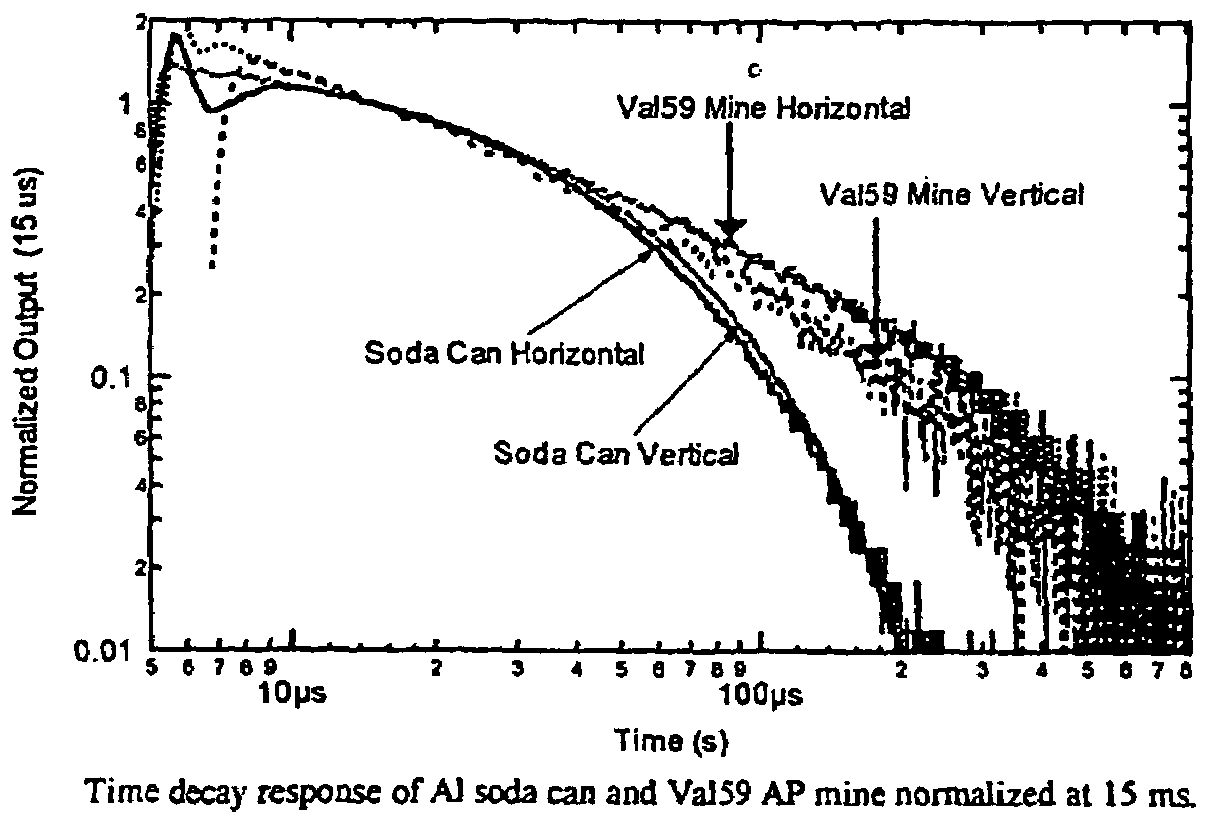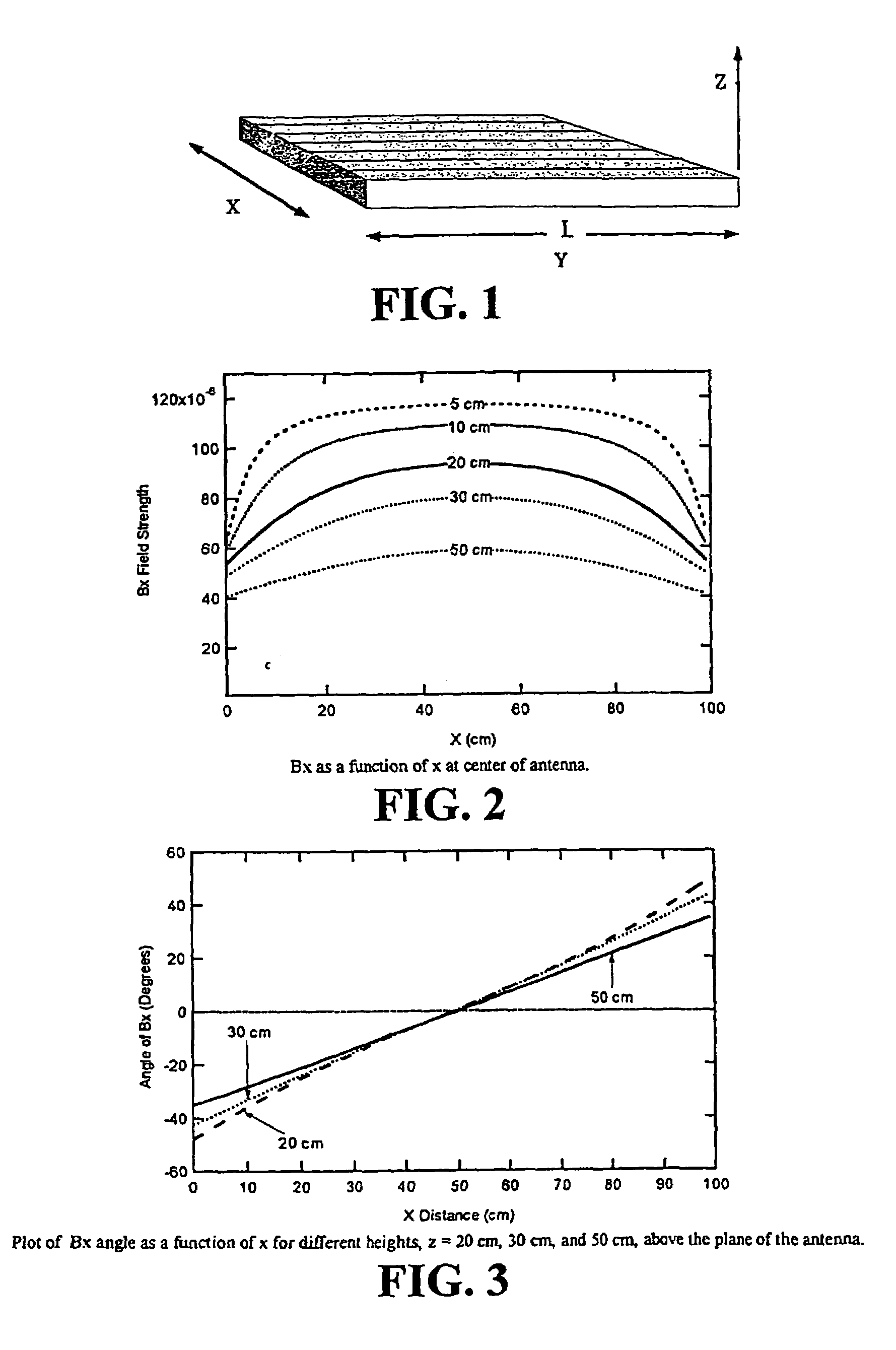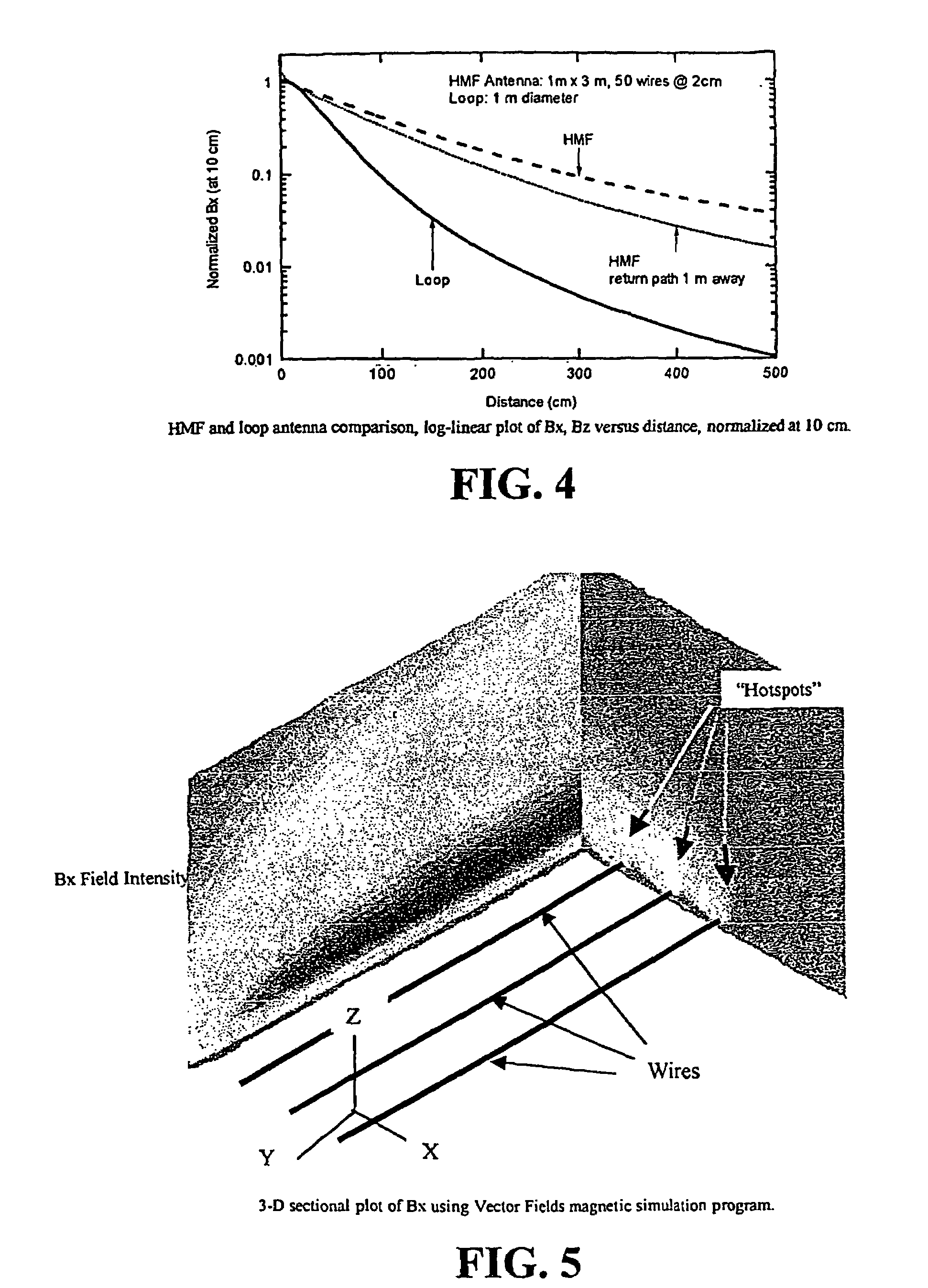Method for metal object identification using a three-dimensional steerable magnetic field antenna
- Summary
- Abstract
- Description
- Claims
- Application Information
AI Technical Summary
Benefits of technology
Problems solved by technology
Method used
Image
Examples
Embodiment Construction
[0049]A discussion is first made as to the underlying physics utilized by a horizontal magnetic field (HMF) sensor system of the present invention. Following this discussion, a description is provided of the steerable two-dimensional HMF sensor system followed by a discussion of experimental data demonstrating the sensor system's capabilities. Following this discussion, a description is provided of the steerable 3-D magnetic field sensor system, which includes two HMF antennas and a vertical loop electromagnetic antenna. Finally, a description will be provided of preferred methods of utilizing the steerable 3-D magnetic field sensor system to classify / identify a metal object.
I. HMF Antenna Model
[0050]The innovative invention of the HMF antenna is an important concept of the present invention. As such, it is beneficial to review the basic physics of the innovative HMF antenna so that the advantages of such a magnetic field antenna and magnetic field receivers can be appreciated.
[0051...
PUM
 Login to View More
Login to View More Abstract
Description
Claims
Application Information
 Login to View More
Login to View More - R&D
- Intellectual Property
- Life Sciences
- Materials
- Tech Scout
- Unparalleled Data Quality
- Higher Quality Content
- 60% Fewer Hallucinations
Browse by: Latest US Patents, China's latest patents, Technical Efficacy Thesaurus, Application Domain, Technology Topic, Popular Technical Reports.
© 2025 PatSnap. All rights reserved.Legal|Privacy policy|Modern Slavery Act Transparency Statement|Sitemap|About US| Contact US: help@patsnap.com



